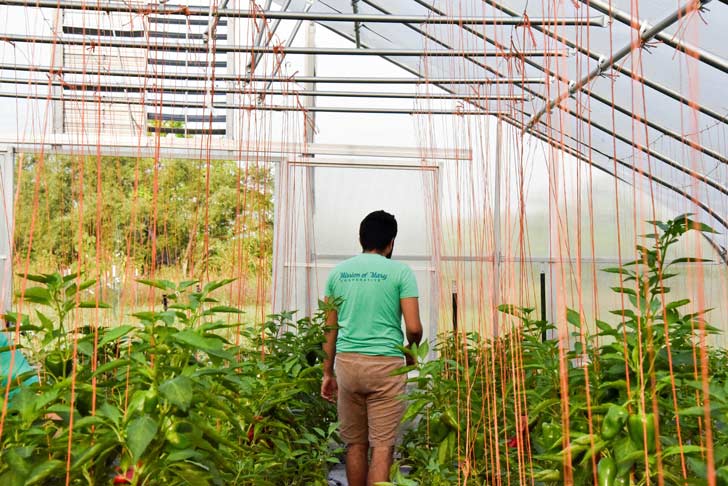The University of Notre Dame’s Church Properties Initiative is a project that empowers churches to use their properties for sustainable development through data-backed research.
And one of its case studies — Mission of Mary Cooperative in Dayton, Ohio — does exactly that.

Mission of Mary Cooperative was developed by Catholic laypeople, or non-ordained members of a church congregation — in the Twin Towers neighborhood of Dayton. They were facing two major issues: abandoned land and limited access to fresh, healthy produce.
In turn, they decided to use the vacant church land they owned for urban gardens that would feed the community.
In 2009, they planted a single garden. Today, they manage a network of six massive urban farming plots across four acres, growing over 75 different varieties of fruits and vegetables.

Every year, the gardens yield an estimated 65,000 pounds of produce for community members.
“Inspired by the Marianist charism, [MMC’s] founders navigated land acquisition, nonprofit incorporation, zoning regulations, property tax exemption, food subsidy programs, and grant applications,” the Notre Dame case study explains.
“The Mission of Mary Cooperative exemplifies the power of local initiative, rooted in faith, to transform underused property into a catalyst for community flourishing.”

The organization’s programming includes a community-supported agriculture program to sell produce to local consumers, as well as rented community garden beds, educational offerings, and a Neighborhood Food Council.
Mission of Mary also donates much of its food, or offers it on a sliding scale for families of all income levels.
“Urban farming allows us to transform spaces that have a negative impact on our community into productive and beautiful gardens,” the organization’s website shares.
“We now grow more than 60,000 pounds of food each year and we’re dedicated to putting as much of that harvest as possible on the tables of families in the neighborhood.”

The organization also supports resettlement efforts for refugees in the area and became the first net-zero nonprofit in Dayton through its focus on renewable energy.
“Through our work, we’re building relationships with our neighbors, building a local food system, and becoming a part of the fabric of the city,” the website continues.
These efforts are not just a good way to use vacant land but a rich part of the organization’s religious roots — those of the Marianist Catholics, an approach to Catholicism developed by a French priest in 1801.
Marianists emphasized the power of small communities to “renew Christianity” following the French Revolution.

Today, it looks like the work Mission of Mary does.
The focus on ecological development also follows the insights of Pope Francis’s term “integral ecology,” which posits that the good of human beings is inseparable from the stewardship of the natural environment.
“In some places, rural and urban alike, the privatization of certain spaces has restricted people’s access to places of particular beauty,” Pope Francis wrote in 2015.
“In others, ‘ecological’ neighborhoods have been created which are closed to outsiders in order to ensure an artificial tranquility,” he added. “Frequently, we find beautiful and carefully manicured green spaces in so-called ‘safer’ areas of cities, but not in the more hidden areas where the disposable of society live.”

The neighborhood that houses Mission of Mary’s gardens is a heavily impoverished area in Dayton, according to Notre Dame. Bisected by an intersection in the 1960s, the area was also economically devastated by industrial decline.
In 2020, the area had a median household income of $17,500, with 76% of children under the age of 5 living in poverty.
While faith-based in nature, the management of the gardens has taken skill and collaboration with government financial assistance programs, private grant funding, and more. It is this flexibility and determination that make it a success story.

“By meeting the lived reality of neighbors living in poverty, MMC ensures that the value it creates in cultivating underused land directly benefits nearby residents,” the case study concludes.
“MMC’s incremental cultivation of vacant land — and relationships — has prepared the soil for further investment in the community’s flourishing.”
Header images courtesy of Mission of Mary Cooperative



